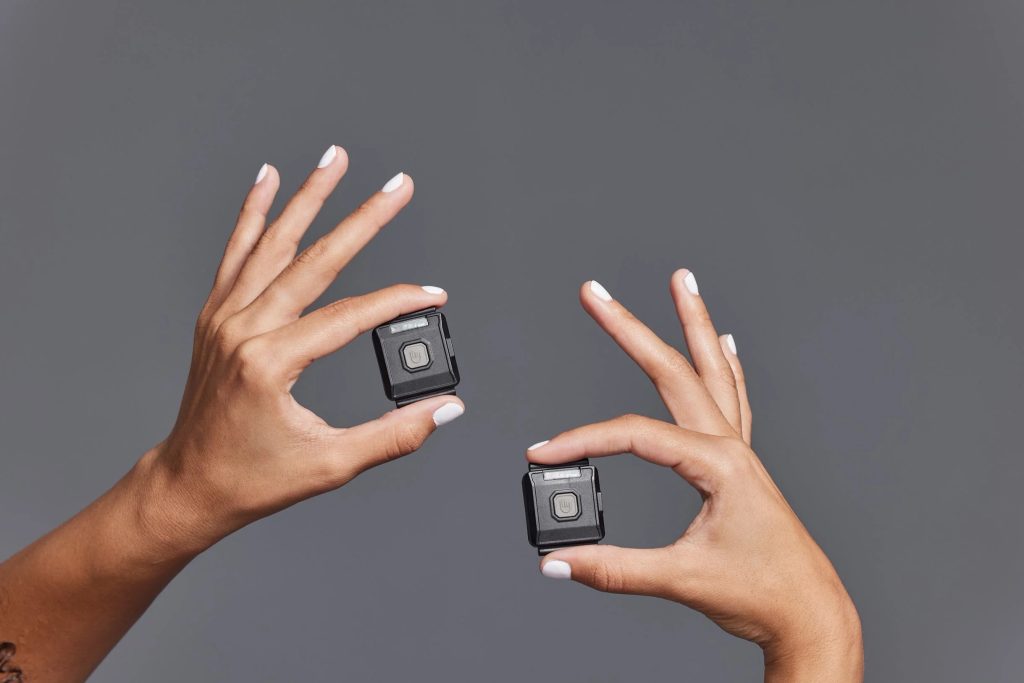What are some ways you cope with stress and anxiety? Stress is currently not categorized as a disability under ADA (Americans with Disabilities Act), but the effects that stress can lead to are. I looked into a wearable device called TouchPoint, a cognitive aid that helps to relieve stress signals in the body using repetitive vibrations. The device was first created by neuropsychologists researching a part of a successful PTSD (Post-Traumatic Stress Disorder) treatment using a handheld device. It has since expanded to help both children and adults. This assistive technology is designed to help users maintain emotional regulation and focus, making it beneficial for individuals with disabilities, as it can help control stress that may trigger conditions related to Autism, ADHD, Parkinson’s, PTSD, and others.
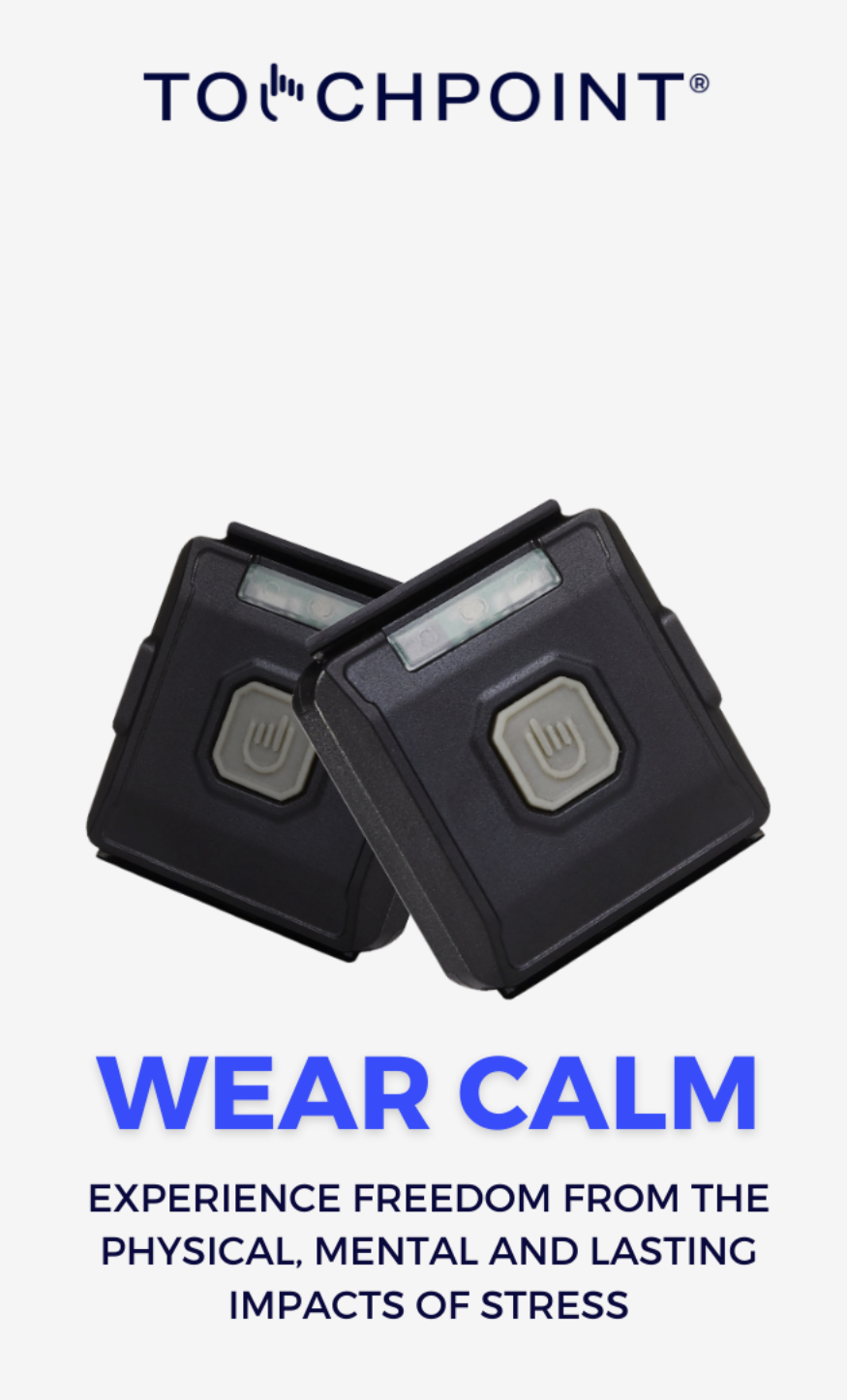
The product uses its patented method BLAST (Bi-Lateral Alternating Stimulation-Tactile) technology has been scientifically proven to alter the body’s “fight or flight” response caused by stress (source). It consists of using two synchronized devices on each side of the body with alternating vibrations, shifting the brain into a calm response. Over time, it is said to train the brain to develop new behavior patterns. Scientific case studies have been conducted to test the product, showing positive outcomes from its use. The TouchPoint device is considered an accessible technology due to its utility, usability, and compatibility.
Feature 1: Customizable Vibration Settings
The TouchPoint device offers three customizable vibration settings to match the user’s current stress level. According to the user guide, Blue (slow speed) is a good starting point for those unfamiliar with the device and is ideal for promoting sleep and meditation. Yellow (medium speed) is recommended to help relieve stress and help stay focused, while Purple (high speed) is best for managing anger and agitation. The medium and high speeds are particularly helpful for managing stress-related symptoms associated with conditions related to Parkinson’s Tremors, Autism, or ADHD. To use the device, both units must be paired and worn together, with alternating vibrations.
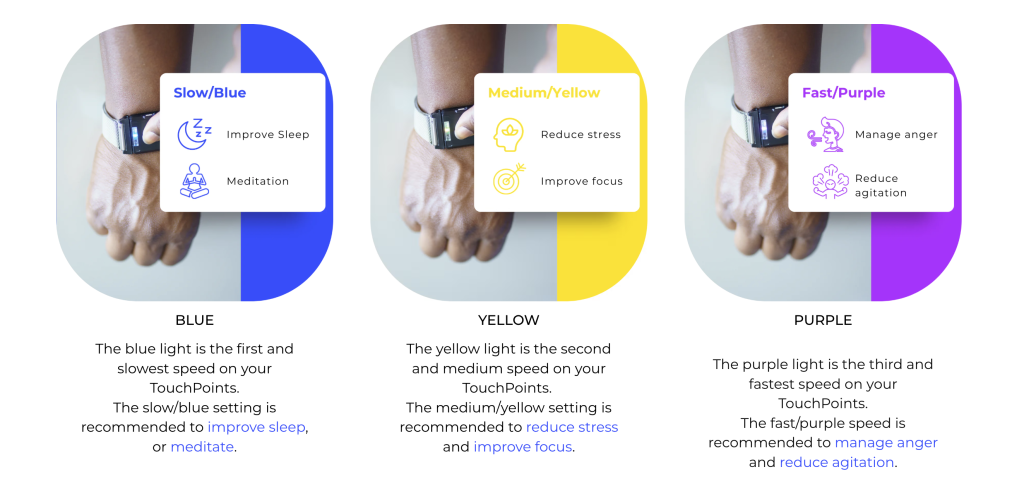
Model of Disability: Functional Solutions Model
The Functional Solutions Model identifies impairments or limitations affecting the ability to complete tasks, then aiming to eliminate the limitations through advancement in technology. The TouchPoint device is an assistive technology made to relieve and calm stress and anxiety that may lead to triggers. The device is adaptable to different needs and reduces dependence on external support, being convenient with a more immediate solution.
Feature 2: Wearable Versatile Design
Unlike other popular stress relieving devices, such as watches or rings, TouchPoints devices can be worn or positioned on various parts of the body, as long as one device is placed on the right side and the other on the left. Users place them near any part of the body that they feel most tension. Children are able to clip them onto their backpack straps, or tossed inside their pockets. Users who prefer not to have the devices visible or directly on their body have options to place them in different places and simply forget about them.
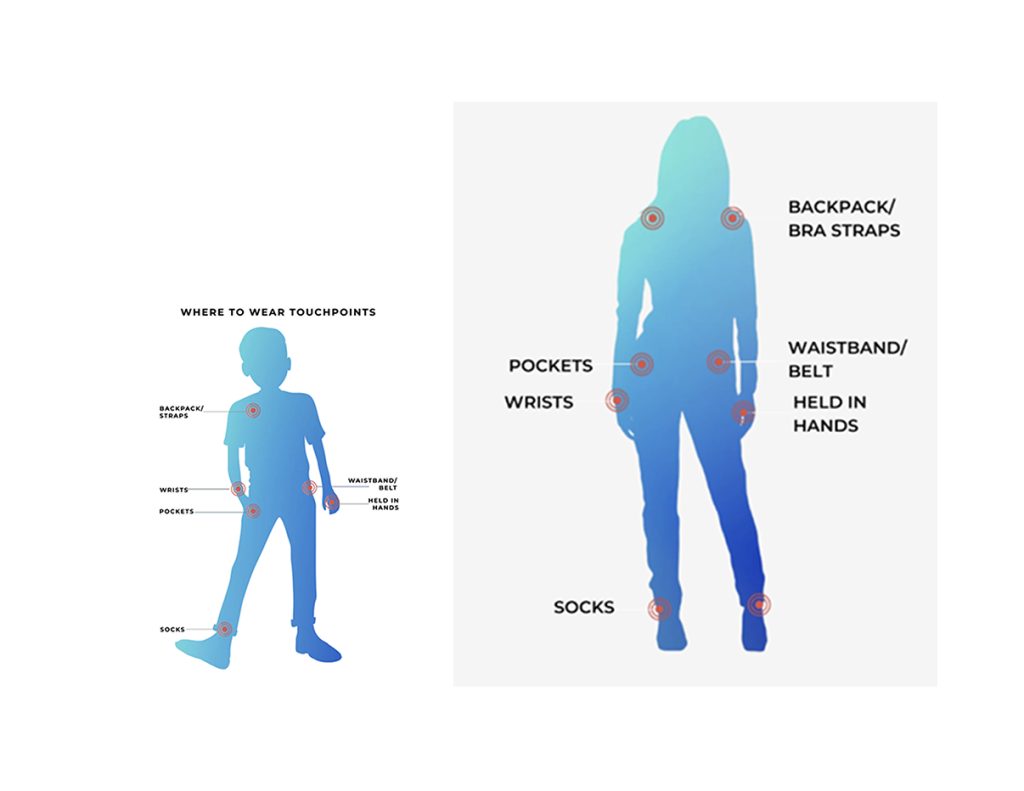
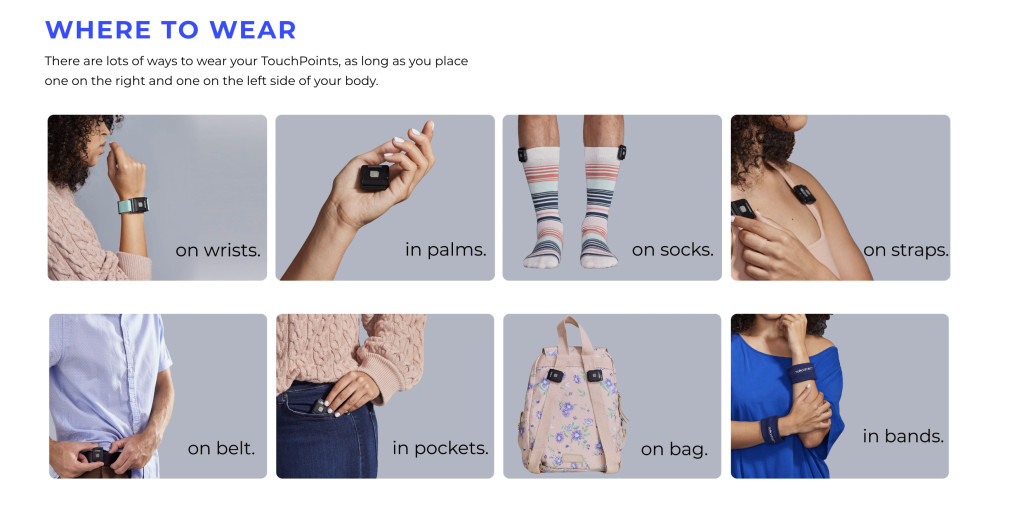
Model of Disability: Social Model
Social Model implies that society creates disabling conditions and it’s just a part of the individual’s environment which can also be caused by poor design. TouchPoint devices are designed to be child and teenager friendly helping— according to their website— youths with ADHD, Autism, Gifted Students, and students with difficulty in behavior and school. The device is intended to promote calmness and improve focus, aiding students in managing schoolwork and behavior. The devices are easily placeable in pockets and backpack straps, making it a convenient and accessible tool for daily use.
Feature 3: Drug-Free Solution
The TouchPoint device states that it “does not treat [type of disability] or any medical condition”, but rather serves as a natural, non-chemical alternative for managing symptoms. Scientific studies have explored its effectiveness, particularly its patented BLAST (Bi-lateral Alternating Stimulation Tactile) technology, which has shown positive results for users. Additionally, clinically proven case studies support its benefits, and certain models may be eligible for FSA/HSA coverage for purchase.

Model of Disability: Medical Model
The medical model is defined as disabilities that are abnormal and caused by disorders, disease, or health conditions— affecting the individual and needs to be “fixed”. The TouchPoint device can serve as a supportive tool to help manage symptoms and trigger related conditions. Doctors may prescribe it alongside existing treatments to provide additional support.
Conclusion
TouchPoint is an assistive technology that helps relieve stress and promote calmness, demonstrating how technology can complement medical treatments. It aligns with the Functional Solutions Model, Social Model, and Medical Model, offering support for various needs. Many users have positives of its benefits, especially for children, but the high price and limited insurance coverage makes it exclusive. Additionally, some reviewers find the design unattractive for everyday wear. While TouchPoint can be a helpful sleep aid or an alternative to medication, its effectiveness may vary, and users should consider it as part of a broader treatment plan. The device’s multiple applications highlight its commitment to inclusivity and accessibility.
References
https://thetouchpointsolution.com
https://openaccesspub.org/jbbs/article/1117
“Week 2- Understanding Disability” (PowerPoint, Pratt Institute SI, 2025)
